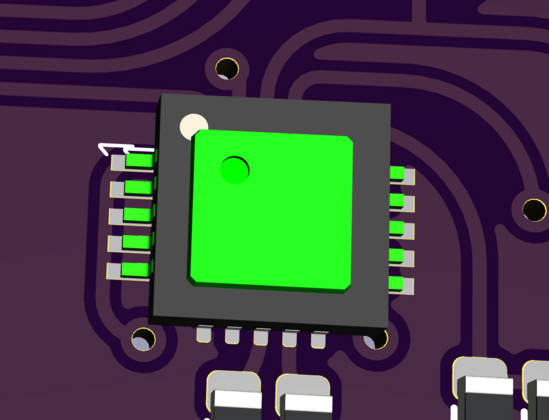RevK :verified_r: · @revk
2123 followers · 7989 posts · Server toot.me.uk
RevK :verified_r: · @revk
2122 followers · 7956 posts · Server toot.me.ukOK, I have been tinkering again. I quite like this board - it is designed to take 12V DC, and drive 10 separate outputs at 12V DC. Intended for the alarm system, but works for lots of other use cases (e.g. nice big 12V LED lamps in my DEFCON light box).
My latest tinkering, apart from ESP32-S3, is to put a WS2812 by each output plug to allow output status to be shown clearly.
I might order some when back from my holiday.
RevK :verified_r: · @revk
2121 followers · 7946 posts · Server toot.me.ukRevK :verified_r: · @revk
2119 followers · 7915 posts · Server toot.me.ukI've not played with these tiny 1mm x 1mm WS2812 LEDs before. They really are tiny. #PCB
RevK :verified_r: · @revk
2110 followers · 7800 posts · Server toot.me.ukRevK :verified_r: · @revk
2103 followers · 7654 posts · Server toot.me.uk
RevK :verified_r: · @revk
2075 followers · 7269 posts · Server toot.me.ukRevK :verified_r: · @revk
2074 followers · 7263 posts · Server toot.me.uk
RevK :verified_r: · @revk
2074 followers · 7258 posts · Server toot.me.ukI think I can make a couple of mm shorter and still keep it single sided. Fun. #PCB
[Yes temp sensor next to processor = bad, I know, it is a test board, and probably fine for humidity]
RevK :verified_r: · @revk
2074 followers · 7258 posts · Server toot.me.ukWhat the hell is wrong with #jlcpcb
I sent U2 as rotation 90.0 degrees.
This has always been with antenna on the left. Another order on the same day with the same part at 90.0 degrees shows antenna left.
Yet this order they consider 90.0 degrees to be facing up, and "corrected" it to be facing down.
Arrrg!
(Yes I had silk screen to show the orientation, and they edited it out FFS). #PCB
RevK :verified_r: · @revk
2060 followers · 7146 posts · Server toot.me.ukSo I am a couple of days in to "The S3 ESP32 is the next thing" without having one to play with. Order some boards. Tinkered with foot print a bit. Made some other designs to use it. Read up on usable GPIOs. By the time I have actual boards next week I'll have re-done most of my PCB designs. I really hope I am not disappointed. #ESP32 #PCB
RevK :verified_r: · @revk
2056 followers · 7120 posts · Server toot.me.uk
RevK :verified_r: · @revk
2054 followers · 7114 posts · Server toot.me.uk
RevK :verified_r: · @revk
1987 followers · 6604 posts · Server toot.me.ukRevK :verified_r: · @revk
1954 followers · 6359 posts · Server toot.me.ukRevK :verified_r: · @revk
1950 followers · 6328 posts · Server toot.me.ukRevK :verified_r: · @revk
1950 followers · 6327 posts · Server toot.me.ukFor my next trick, trying to make up the panel for a #JLCPCB #PCB order myself. Only snag is V-cuts as I can't work out what file they expect for them, so I'll add notes.
But the end result is I should need a lot less labelling on these when sending to Amazon. Just need to find reasonably clear anti-static bags now.
RevK :verified_r: · @revk
1945 followers · 6302 posts · Server toot.me.ukI have a load of spare bare PCBs. Most work, and most have date codes so the exact schematic can be found on my github if you try. It seems a shame to chuck them out. Is there anywhere that would be a good home? Maybe a #hackspace that just wants to practice soldering, or actually use some of the boards. A good example is those purple ones - very few components needed to make a USB powered #ESP32 board. Just that actually ordering more boards was/is sometimes cheaper than fewer! #PCB
RevK :verified_r: · @revk
1935 followers · 6236 posts · Server toot.me.ukBusy morning, trying a new regulator (MD8942), synchronous, and somewhat cheaper than the LMR16006. 4V-36V in is a nice range. I'll see how well it works when the #PCB comes next week. Side by side comparison on oscilloscope...
A tantalum output cap may be overkill though.
RevK :verified_r: · @revk
1929 followers · 6193 posts · Server toot.me.ukThe CH340X is physically about the same size, but simpler pin out than FT231XQ.

















